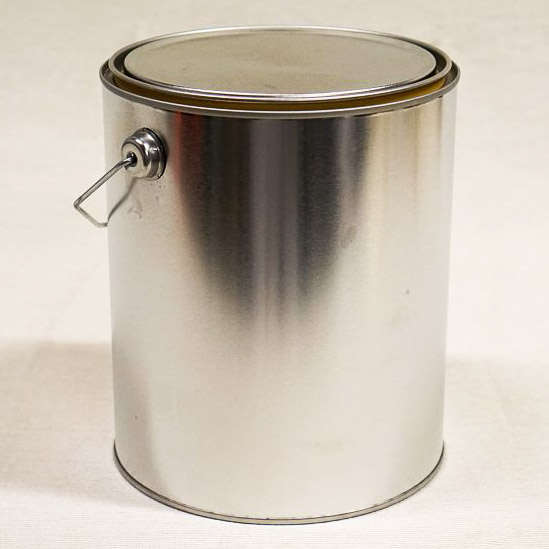Why Do Paint Cans Rust? Why Aren't Paint Cans Made Out Of Plastic?

General Finishes is often asked about product cans. Why do they rust? Why aren't they made of plastic? Here is the backstory from GF:
During the supply-line shortages caused by Covid, we are thrilled to have any cans for our paints, stains, and topcoats.
- This is not just a General Finishes problem. It is a paint industry problem. All major paint manufacturers have the same issues.
- Our retail and professional lines involve pint, quarts, gallons, 5-gallon pails and drums, NOT just quart and pint plastic jars. We do use gallon plastic jugs for oil-based sealers, such as ARM-R-SEAL, that do not require as much agitation to disperse the flatting agents on the bottom. Paint and water topcoats for wood need to be stirred up from the bottom at each point of use because the ingredients have different gravities and separate in the can.
- We can control the quality of the product that goes in the can, but not the can itself.
HISTORY
Years ago, we tested using plastic cans. They come and go with other manufacturers for the following reasons:
- They do not hold up well during shipping, often breaking or leaking.
- The plastic shatters in cold weather (we cannot control all UPS trucks and overnight stops).
- Plastic containers “panel,” or cave in on the sides, over time.
- Even if we wanted to use plastic, the cost would be higher because of the current shortage of propylene oxide, a principal ingredient in plastic. Today, the price of a single 5-gallon pail is more than 5 single-gallon epoxy-lined cans.
WHERE ARE WE GETTING CANS DURING PANDEMIC TIMES?
- There were two major can manufacturers in the United States and we purchased from the one we thought produced a better can.
- A few years ago, can manufacturer #1 bought can manufacturer #2, so now there is a monopoly – no free-market competition to produce a better can.
- Since Covid began, we are dual-sourcing them from the United States and from Italy via containers. The integrity of the can is the same; the only difference is the closure varies slightly.
GENERAL FINISHES USES EPOXY-LINED CANS FOR WATER-BASED PRODUCTS, EXCEPT FOR THE CHIME (the rim of the can), WHICH CAN NOT BE LINED.
- The chime cannot be treated with epoxy because the rim is a tightly sealed, multiple-friction ring: a plug closure fits into a “well” of a seamed-on ring. The plug is pressed into the ring. When the outside and inside edge come into contact with the ring, this creates multiple sealing surfaces on the plug/ring combination.
- It is possible the cans could have an undetected pinhole leak, which may cause rust to form in the can upon opening for the first time. Your retailer will be happy to exchange the can or make a return. We, in turn, would support our retailer with a credit.
CLEANING AND CARE OF THE CHIME DURING USE IS IMPERATIVE.
- NEVER work out of the can unless you are going to use all of the contents immediately.
- If you are going to be using the contents slowly over time, decant to a different container.
- If water-based paint gets on the chime and it is not carefully cleaned before closing the can, the chime will rust.
- Always carefully clean the rim of the can with a paper towel, followed by a damp paper towel before tightly putting on the lid.


Leave a Comment